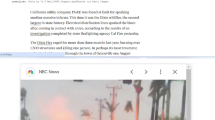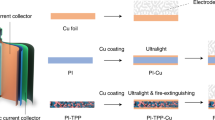Abstract
THE author of a note on p. 497 of NATURE of October 2, while giving credit to E. H. Liveing as the originator of the method of detecting and measuring fire-damp by means of an electrically heated platinum wire, wrote: “The apparatus in skilful hands would certainly measure fire-damp, but its value lay rather in its promise than in its practical utility.” I desire to protest against this disparaging statement. I helped Mr. Liveing to make his original magneto-electrical machine, for this was before the days of the Faure battery or the Clowes hydrogen lamp. While all sorts of physical laboratory methods for comparing the temperatures of the two platinum helices, for example, Wheatstone bridge, etc., were considered. Liveing elected to adopt the more simple photometric device of a sliding white angle block placed between the two sources of light. When the two sides appeared equally bright the position of the block read against a scale indicated the proportion of firedamp. This was an operation which a fireman could perform quite as quickly and easily as the usual one with a ‘cap’
This is a preview of subscription content, access via your institution
Access options
Subscribe to this journal
Receive 51 print issues and online access
$199.00 per year
only $3.90 per issue
Buy this article
- Purchase on Springer Link
- Instant access to full article PDF
Prices may be subject to local taxes which are calculated during checkout
Similar content being viewed by others
Rights and permissions
About this article
Cite this article
BOYS, C. Liveing's Fire-Damp Indicator. Nature 118, 626–627 (1926). https://doi.org/10.1038/118626b0
Issue Date:
DOI: https://doi.org/10.1038/118626b0
Comments
By submitting a comment you agree to abide by our Terms and Community Guidelines. If you find something abusive or that does not comply with our terms or guidelines please flag it as inappropriate.



